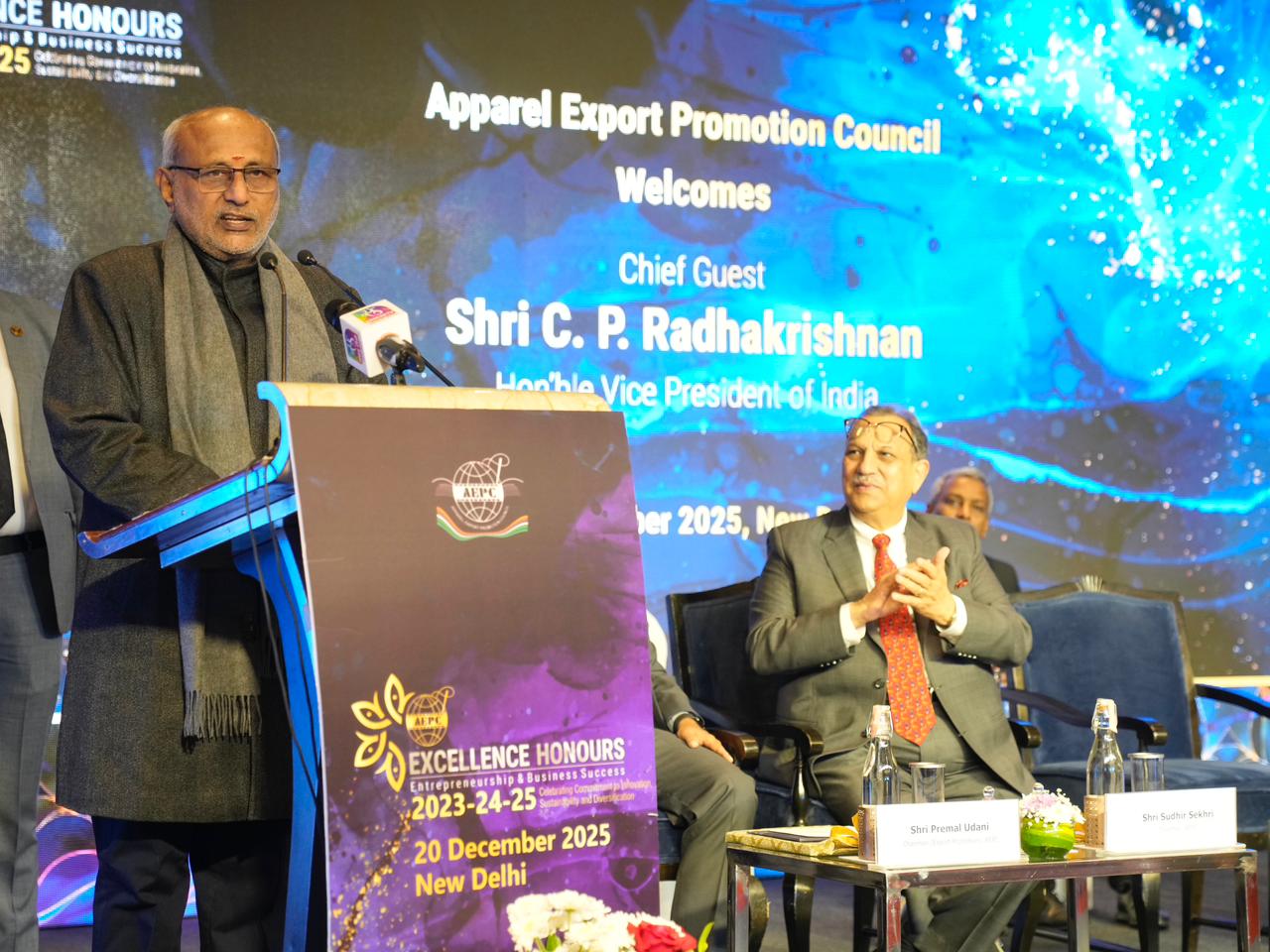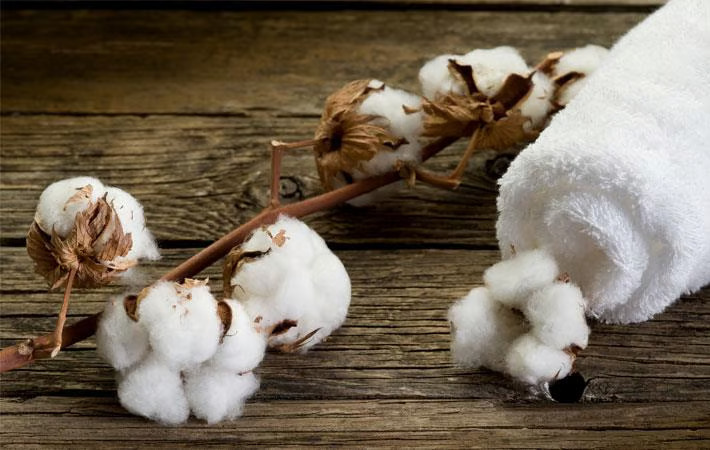FW
Small businesses, retailers, manufacturers and designers across the US and Latin America will get a boost for the summer when the Apparel Textile Sourcing Miami (ATS-M) trade show, a one-of-a-kind event expands to Miami from May 21 to 23, 2018, at the Mana Wynwood Convention Center in Miami.
The event will bring to Florida hundreds of international apparel and textile manufacturers from China, India, Bangladesh, the US, Turkey, Pakistan, Mexico and many other countries and territories from across Central and South America and all around the globe. Moishe Mana, Miami-based billionaire developer and CEO of the Mana Group says, “We are committed to making Miami the nexus for commerce between Asia, North America and Latin America.” He continued, "We’re excited to have ATS Miami join this initiative as the fashion and apparel industry is one of our core verticals.”
The ATS brand established itself internationally with Apparel Textile Sourcing Canada, held every August in Toronto. In 2017, the event grew by 50 per cent in terms of attendees and international exhibits. Attendees will gain new insights and information to best navigate and profit in the international sourcing process. “The expansion of the ATS Brand to Miami is a direct response to the market demand and fills a significant gap for the US and Latin American markets,” said Jason Prescott, CEO of JP Communications, organiser of the event and parent-company to TopTenWholesale.com and Manufacturer.com, the most expansive network of business-to-business sourcing platforms in the US. Millions of international members use these brands to locate wholesalers and manufacturers.
ATS-M will feature seminars, panels and runway shows featuring acclaimed industry and government experts, covering topics from trade agreements to best practices with an eye on the changing Latin American market, as well as tips on how to choose overseas producers, plus new approaches on succeeding in the US market.
The last general elections in Bangladesh and the following year had cost apparel manufacturers of the country dearly, causing them to lose market and buyers in a number of countries mainly because of the violence taking place all over Bangladesh and discouraging retailers.
Five years have rolled over and Bangladesh would again go through a national election by the end of this month. The election year 2018 is drawing concerns over the potentiality of being a rough and violent year.
Dhaka-based think-tank South Asian Network on Economic Modelling (Sanem) has identified 2018 as a key year riddled with challenges and looming “political uncertainty,” inflation and sluggish exports and remittances for the economy of Bangladesh. Bangladesh’s apparel makers and exporters, who contribute to roughly 82 per cent of the economy, fear another such crisis with political parties gearing up in full swing for the oncoming elections.
Bihar Deputy Chief Minister Sushil Kumar Modi has stated that an apparel and textiles park will be set up on the outskirts of the state capital for which more than 100 acres has been earmarked. Speaking at the inauguration of a three-day fair organized by the Bihar Readymade Garments Association, Sushil Modi said 115 acres of land have been earmarked in Bihta for the proposed park.
The park will be set up as part of the state government's policy to promote textiles, leather, Information Technology and food processing. The Deputy CM, who also holds the finance portfolio, said a number of incentives were being offered to those willing to invest in the state, which include exemption from land registration and conversion fees and a 10 per cent grant on interest payable on bank loans.
He further added on offer are 100 per cent refund on SGST (state goods and services tax), 50 per cent assistance on the amount payable towards EPF and ESI and a skill development subsidy of Rs 20,000 per employee from Bihar.
The Deputy CM appealed to readymade garment producers to invest in Bihar, stating that the sector had immense potential for job creation and pointing out that 90 per cent workers employed in the sector at places like Mumbai and Bengaluru hail from the state.
India’s largest knitwear and readymade garment exporters organisation, The Tirupur Exporters’ Association (TEA), has asked for exemption of IGST levy on imports of accessories, early clearance of accumulated input tax credits, permanent deletion of Reverse Charge Mechanism (under Section 9(4) of GST) and incentives for investments made in labour accommodation.
A TEA delegation which met Finance Minister Arun Jaitley recently, and presented him with a memorandum which stated that till June 30, 2017, apparel exporters were importing accessories such as zips and tags without any customs duty, using the Export Promotion Certificate (EPC). But post GST, imports using EPC is being subjected to IGST, however, as most accessories are taxed at 18 per cent, this tax is blocking huge working capital resulting in immense hardship to the trade.
The memo went on to note that similar problems were faced by exporters in import of capital goods under the Export Promotion Capital Goods Scheme and raw materials through the Advance Authorisation Scheme, and the Government had resolved these issues by bringing out a notification, dated October 13, which exempts imports under the two schemes from levy of IGST. TEA noted the EPC scheme which was omitted should be included.
TEA has asked for a separate notification to be issued in line with the notification exempting imports of accessories using Export Promotion Certificate from the purview of IGST. Quick release of refunds due to exporters is another issue before the FM. The original plan under the GST compliance framework was filing of GSTR 1, 2 and 3 by all taxpayers resulting in matching of tax credits, thereby facilitating release of refunds due to exporters within seven days of the claim.
A research team led by faculty at Binghamton University, State University of New York, has developed a textile-based, bacteria-powered biobattery that could someday be integrated into wearable electronics. The team, led by Binghamton University Electrical and Computer Engineering Assistant Professor Seokheun Choi, created an entirely textile-based biobattery that can produce maximum power — the same as that produced by his previous paper-based microbial fuel cells.
These biobatteries are said to exhibit stable electricity-generating capability when tested under repeated stretching and twisting cycles. Seokheun Choi said that this stretchable, twistable power device could establish a standardised platform for textile-based biobatteries and will be potentially integrated into wearable electronics in the future. “There is a clear and pressing need for flexible and stretchable electronics that can be easily integrated with a wide range of surroundings to collect real-time information. Those electronics must perform reliably even while intimately used on substrates with complex and curvilinear shapes like moving body parts or organs. We considered a flexible, stretchable, miniaturised biobattery as a truly useful energy technology because of their sustainable, renewable and eco-friendly capabilities. Compared to traditional batteries and other enzymatic fuel cells, microbial fuel cells can be the most suitable power source for wearable electronics because the whole microbial cells as a biocatalyst provide stable enzymatic reactions and a long lifetime,” Choi noted.
Sweat generated from the human body can be a potential fuel to support bacterial viability, providing the long-term operation of the microbial fuel cells. Choi elaborated, “If we consider humans possess more bacterial cells than human cells in their bodies, the direct use of bacterial cells as a power resource interdependently with the human body is conceivable for wearable electronics.” This work was supported by the National Science Foundation, the Binghamton University Research Foundation and a Binghamton University’s Analytical and Diagnostics Laboratory’s Grant.
The government of Nepal has initiated construction of a Rs 2.5 billion garment processing zone in the Simara Special Economic Zone (SEZ). As production costs in Nepal are relatively high in the region, this project, which is expected to be completed by 2018-19, will lower the cost of production and increase exports. The services offered at the processing zone will make the price of Nepali products competitive in international markets.
The SEZ, located in Bara district, will be spread in over 300 bighas of land and is expected to house at least 30 apparel production units. Chandika Prasad Bhatta, Executive Director, SEZ development committee says garment manufacturers can purchase the plot at Rs 20 per sq. mt. with infrastructure such as electricity, drainage and other such logistics at an affordable price. Firms exporting at least 75 per cent of their production can also benefit from the services.
"Companies with a history of being a large exporter, providing jobs to a large number of people and making large investments will be given priority to operate their production units inside the processing zone," Bhatta disclosed. The garment processing zone is expected to compensate for high transport and shipment costs due to Nepal's landlocked status because the proposed zone is located near the country's only rail-linked dry port in Birgunj.
The garment processing zone went full steam ahead post the US extending zero tariff preference for 66 products, including apparels, into its market through the 'Trade Facilitation and Trade Enforcement Act'.
The Myanmar’s National Tripartite Committee on the Minimum Wage has announced a 33 per cent hike in minimum wage for the country’s garment workers. The new minimum wage will now be 4,800 kyats/day, effective March 2018.
Garment factory owners are of the view that a 33 per cent increase in the minimum wage would be difficult for them to ensure. Further, Myanmar’s law requires 200 per cent wages for working overtime, the highest when compared to any other manufacturing country in the Southeast Asian region. However, in spite of the hike, the new minimum wage is still lower than 55 per cent increase demanded by many unions. SMART Myanmar, that promotes and supports the sustainable production of garments in Myanmar, will be updating the content in its app ‘Shwe Job’ by February this year to reflect these changes in the wages.
Shwe Job is a Myanmar language educational app that was launched to teach factory workers and managers about occupational safety and health and information on the country’s labour laws. Myanmar reported a strong year for the garment export sector during the seven-month period from April-November in 2017. During this period, Myanmar exported garment products valued at US $ 1.5 billion.
Mumbai is ready to get its first textile museum to document, archive and showcase Mumbai’s textile legacy. The Brihanmumbai Municipal Corporation (BMC) will start constructing the textile museum in February this year. The building will include a live, functioning mini-textile mill and a representation of the old world chawl life. In addition, landscaping is planned around a lake inside the compound, an amphitheatre and a musical fountain.
The entire complex will be spread across 16.3 acres of land at the shuttered United Mill compound in the Kalachowki area in Mumbai’s Eastern suburbs, of which 14 acres will be used for construction and the remaining for beautification. Mumbai’s Municipal commissioner, Ajoy Mehta said the planning committee is to make the museum interactive for the public and accessible to all. Mehta said he has asked the committee to restore the mills, the water body in the compound. The BMC has also appointed JJ School of Arts, Mumbai's premier art institute established in 1857, to prepare a vision document for the museum and to design its architecture.
Part of the United Mills compound are three ring and spinning structures, a chimney, a semi-automatic loom and a pond, all of which are protected by varying heritage status levels. Restoration work on some of the structures has already begun. All the heritage structures will be restored to its past glory.
The new museum will include fashion galleries that display traditional Indian textiles as well as the life and culture of the mill worker communities over the ages and education about India's and specifically Mumbai's once thriving textile industry.
Indonesia’s textile sector reached 3.65 per cent in Q2 of 2017. This figure is significantly higher than the previous quarter which was only 0.16 per cent. Chairman of the Indonesian Textile Association Ade Sudrajat said growth is due to several factors. First, many factories have relocated to Central Java and this has helped increase productivity. "So production can grow better, investment in this year is also quite big growth upstream."
Further, the increase in textile factory investment realisation contributed to the growth of the textile industry. "Investment growth is quite large, especially those who play in the upstream sector," he revealed.
The government needs to support the sales performance of domestic manufacturers by halting the rate of imports to enhance domestic productivity. "If the government consistently curb imported textile goods from China, we are optimistic that domestic production will increase and textile growth performance could be better," he concluded.
Topshop, the British multinational fashion retailer of clothing, shoes, make-up and accessories, will set foot in Shanghai. The Arcadia-owned labels’ first Chinese flagship store will be on Huaihai Middle Road in the country’s premier shopping city and will cover a 3,400 sq m space over three floors. Work has already started on the premises with the store expected to open this September.
The brand is only directly available via its webstore in mainland China at the moment, although it has been sold in the Galeries Lafayette department store in Beijing and it has two Hong Kong stores. This move into mainland China makes it a relatively latecomer to the country and is way behind some of its biggest fast fashion rivals in entering what is potentially the world’s biggest fashion market.
Definite news of its Shanghai opening comes after it said in late 2016 that it had signed a deal with e-tail giant Shangpin.com to open physical stores in China. The brand did not fare well in its international business last year, some of which including the failure of its franchised Australia and New Zealand operations and also its closure of its Spanish store.
Key takeaways are that it’s important to get the product right for the market rather than just depend on the power of the brand name to help you sail through. Opening in China makes good commercial sense. Last year an AT Kearney report had said the country was second only to India in terms of retail investment due to the sheer size of its consumer market that makes it highly attractive to international businesses. Topshop has around 500 shops worldwide – of which some 300 are in the UK.












